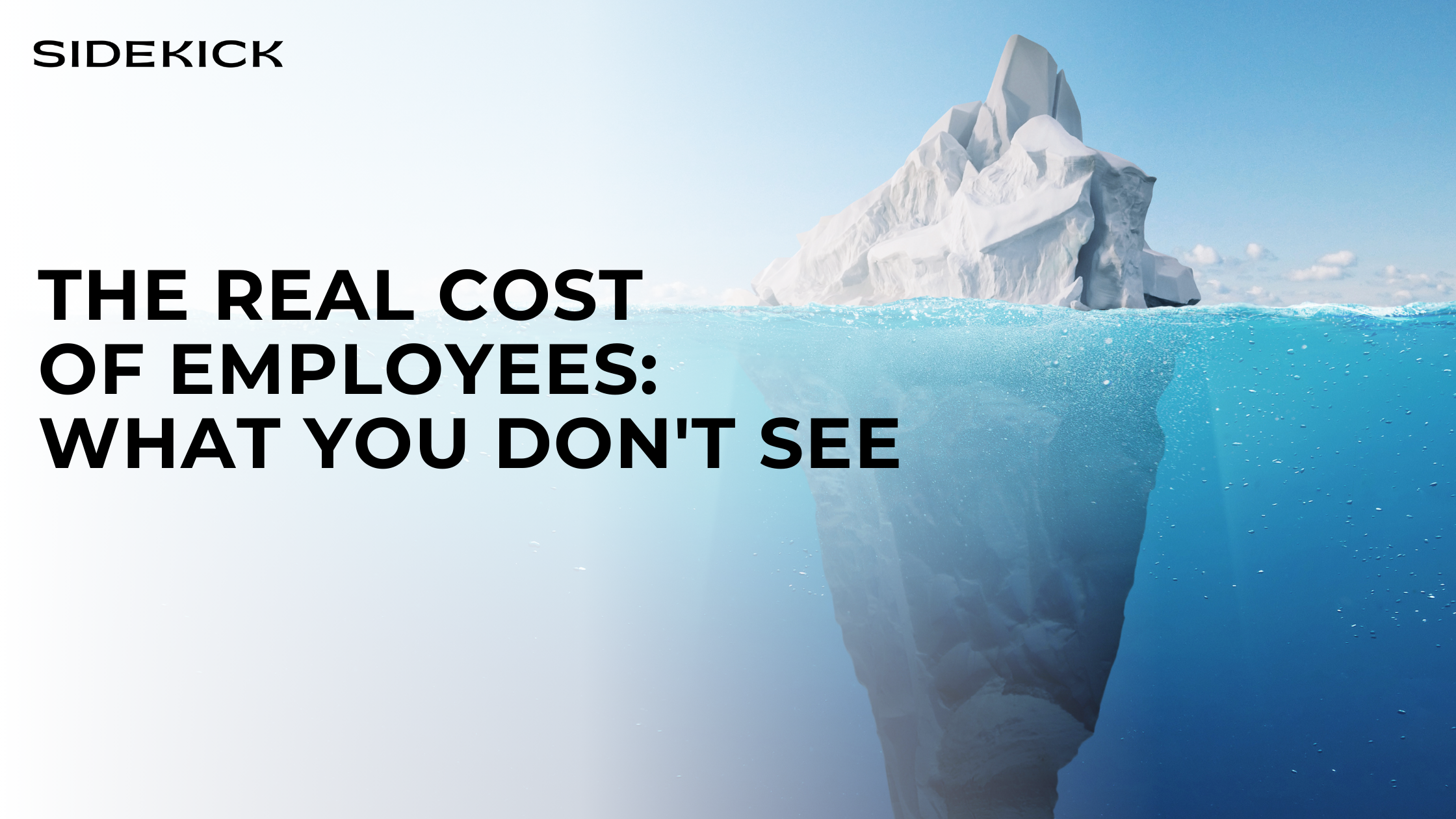

You started with a dream and a side hustle. Maybe it was building websites after your day job, selling handcrafted goods on Etsy, or offering freelance services on weekends. Whatever your hustle, it began as an exciting venture – extra income doing something you actually enjoyed.
Then something amazing happened: your side gig started gaining traction. Clients referred friends. Orders increased. Your Instagram following grew. What began as a passion project started showing real business potential.
But here’s where things get tricky. Months or even years later, you’re working harder than ever, but your growth has stalled. You’re caught in a frustrating cycle – too successful to quit, but not successful enough to feel financially secure or truly satisfied.
The uncomfortable truth? The very mindset that helped you launch your side hustle might be what’s preventing it from evolving into a thriving small business.
The early days of any business venture require scrappy resourcefulness. You handle everything yourself, keep costs minimal, and squeeze productivity from every spare moment. This bootstrap mentality is necessary and admirable when you’re starting out.
But as a business coach who’s worked with hundreds of entrepreneurs transitioning from side hustler to business owner, I’ve identified specific side hustle thinking patterns that become dangerous growth barriers when not evolved:
Side Hustle Mindset: “I need to do everything myself to save money.”
When you’re juggling a day job and side hustle, doing everything yourself makes sense. You have limited funds, and your time, while scarce, is the resource you can most afford to sacrifice.
Jake, a graphic designer who started creating custom illustrations for small businesses, found himself in this trap: “I was handling every aspect – from client communications and project management to the actual design work, invoicing, tax preparation, and even my own website maintenance. I thought I was saving money, but I hit a ceiling at about $45,000 in annual revenue. I simply couldn’t take on more clients.”
Why it kills growth: As client demands increase, the DIY approach creates three critical problems:
Growth mindset shift: “I need to focus my time on the highest-value activities and find solutions for everything else.”
Side Hustle Mindset: “I need to charge less than established competitors to win business.”
Many side hustlers set their initial prices low to attract their first clients, often significantly undervaluing their services. This makes sense when building a portfolio or client base from scratch.
Melissa, who started a social media management business while working at a marketing agency, fell into this pattern: “I was charging about 30% of what my agency charged clients for the same services. It seemed like a good deal for everyone – clients got agency-quality work at a discount, and I built my client roster. But two years in, I was working non-stop and still barely covering my expenses.”
Why it kills growth: Low pricing creates a business model that’s fundamentally difficult to scale because:
Growth mindset shift: “My expertise delivers real value, and my pricing should reflect that value while allowing for sustainable business growth.”
Side Hustle Mindset: “I’ll take whatever business comes my way.”
When starting out, most side hustlers take a reactive approach to business development – responding to whatever opportunities present themselves rather than strategically pursuing ideal clients or projects.
Carlos, who built a small bookkeeping service while working as an accountant, experienced this firsthand: “I said yes to literally anyone who needed bookkeeping help, regardless of their industry, size, or needs. Before long, I had 18 clients across 12 different industries, each with different expectations and requirements. I was drowning in complexity.”
Why it kills growth: The reactive approach prevents strategic growth because:
Growth mindset shift: “I need to strategically choose which clients and projects align with my long-term business vision.”
Side Hustle Mindset: “I’ll figure it out as I go along.”
Side hustlers typically operate with minimal systems – maybe a basic checklist, a simple spreadsheet for tracking clients, and invoicing through PayPal or a basic accounting tool. This informality works when serving just a handful of clients.
Taylor, who offered virtual assistant services nights and weekends, experienced the painful limitations of this approach: “I kept everything in my head or scattered across different apps. It worked fine with my first few clients, but as I approached 10 clients, things started falling through cracks. I’d forget to invoice someone, miss deadline details, or have to recreate processes I’d already figured out.”
Why it kills growth: Poor systems create exponential problems as volume increases:
Growth mindset shift: “I need to create simple, repeatable systems that can scale with my business and be handled by others.”
Side Hustle Mindset: “My personal effort and time are the products I’m selling.”
Many side hustlers build their initial business model around trading their time for money, creating an identity that’s inseparable from the work itself.
Aisha, a freelance writer who built a solid side income creating content for tech companies, describes this mindset: “I saw myself as a freelancer taking gigs, not as a business owner building a content agency. Every client project was about my personal writing skills. I couldn’t imagine removing myself from the process.”
Why it kills growth: When your identity is inseparable from the work:
Growth mindset shift: “I’m building a business that leverages my expertise but isn’t dependent on my personal time for every dollar earned.”

If you’ve recognized any of these mindset barriers in your own business, don’t worry – they’re natural stages in entrepreneurial growth. The key is recognizing when these once-helpful perspectives have become limitations.
Here’s how to make the transition:
The most critical shift happens in how you view your primary responsibility.
Action steps:
Mark, who transitioned his part-time consulting gig into a thriving advisory firm, made this shift deliberately: “I started treating Thursday afternoons as my ‘CEO time.’ No client calls, no deliverable work—just strategic planning, reviewing metrics, and improving business operations. Those few hours weekly completely transformed my business trajectory.”
The path from side hustle to scalable business requires getting help with operational and administrative functions.
Action steps:
Riley, who built a thriving social media agency from a weekend side hustle, shares: “I was terrified to spend money on help when I was still feeling financially insecure. I started with just 10 hours monthly of virtual administrative support for my most tedious tasks. Within three months, I had freed up enough capacity to take on three new clients, more than paying for the support.”
For many growing businesses, back-office operational support provides the perfect entry point to delegation. Having professionals handle administrative tasks, basic customer service, bookkeeping, and operational details creates immediate time leverage without the complexities of hiring employees.
Moving beyond the time-for-money trap requires rethinking how you package and deliver your expertise.
Action steps:
Damon, who evolved his freelance web development side hustle into a digital agency, explains his approach: “Instead of custom-quoting every project, I created three clear website packages at defined price points. This simplified sales conversations, made my revenue more predictable, and allowed me to build a team around consistent deliverables.”
Creating systems that support growth is essential for breaking through side hustle limitations.
Action steps:
Elena, who transformed her virtual assistant side gig into a small agency, credits systems for her breakthrough: “I spent one month creating detailed processes for everything we do. It seemed like a waste of time initially, but those documented systems allowed me to bring on three junior VAs who could immediately deliver consistent work to our clients.”
Growing businesses frequently find that dedicated back-office partners offer a shortcut here – providing ready-made systems for operations, client management, and financial processes without the learning curve of building everything from scratch.
Breaking the low-price cycle requires strategic repositioning based on the value you deliver, not just the time you spend.
Action steps:
Jamal, who built a Facebook ads consultancy from a side hustle, shared his pricing journey: “I started at $500 per month per client because I was learning. By year two, I was getting stellar results but still charging beginning rates. I created a 6-month plan to gradually raise all clients to market rates between $1,500-2,500 monthly. I lost two clients but increased revenue by 170%.”
How do you know when it’s time to shed the side hustle mindset and embrace a growth-focused business approach? Watch for these indicators:
Ready to break free from the side hustle mentality that’s limiting your growth? Here’s a 30-day plan to begin the transition:
Days 1-7: Assessment and Vision
Days 8-14: Systems Foundation
Days 15-21: Support Exploration
Days 22-30: Implementation and Pricing Strategy
The journey from side hustle to sustainable business isn’t just about working more hours or landing more clients. It’s about fundamentally shifting how you view yourself and your business.
The entrepreneurs who successfully make this transition share a common experience: what seems like an expense—paying for support, investing in systems, spending time on strategy rather than delivery—quickly reveals itself as the highest-return investment they could make.
Lauren, who built a six-figure design business from a weekend side project, puts it perfectly: “For two years, I was a designer with a handful of clients. Now I run a design business that happens to include my personal creative skills. That mindset shift changed everything—my income, my work satisfaction, and my ability to actually enjoy the business I’d created.”
Your side hustle showed you the potential. Now it’s time to build the business that fulfills that potential.
So, which side hustle mentality has been holding you back? And what’s your first step to break free?
Are you struggling with the transition from side hustle to sustainable business? Share your biggest challenge in the comments!
Schedule a free consultation today with one of our experts.
